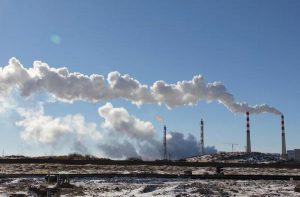Growth in China’s coal consumption will start to slow but the country will remain the biggest source of new demand for the fuel blamed most of climate change, the International Energy Agency said in a forecast on Monday.
That means that China is unlikely to experience a peak in its coal demand until sometime in the 2020s, the IEA said, taking a much less sanguine view than
other research which predicts that the world’s largest emitter could reach the high point for demand before the turn of the decade.
“Longer-term trends might suggest peak coal in China during the next decade. However, we do not see that peak in the outlook period unless economic growth is much lower than assumed,” the IEA said in its medium-term outlook for global coal demand and supply.
Commentators have said in
recent reports that the later that China’s coal demand reaches it zenith, the more difficult it will be for the country to meet a commitment to peak greenhouse-gas emissions by 2030.
The IEA said China will be “the coal giant for many years in the future,” forecasting that demand annually will grow at 2.6% or more than 100 million tonnes a year up until 2019, meaning that the country would account for 60% of new coal demand.
“China will add more coal demand than any other country, but we have entered a new time in which the outstanding growth from the past in all of the coal indicators, such as production, consumption and imports, will not be repeated,” the Paris-based agency said.
Although China’s growth in demand for the most polluting fossil fuel will start to moderate in the coming years, the amount of
coal-fired capacity added in the past decade underlines that the challenge that will be required to shift the country’s energy mix decisively towards renewable energy.
China’s proposed 2030 greenhouse-gas peak will form part of national plans to be submitted by all countries to the UN next year ahead of a climate summit in Paris a year from now.
But following only very modest progress at
UN climate talks that ended in Lima on Sunday, one of the major sticking points in 2015 will be the extent to which other large emitters trust China’s ability to verify efforts to curb growth in carbon emissions.
Although at UN talks all countries agreed for the first time to draw up action plans to cut emissions, little has been achieved on the extent to which nations will be accountable for delivering on their commitments.
India
The IEA coal report shows why it is difficult for developing countries to commit to ambitious carbon targets, particularly India, as they continue to rely on the fuel to expand the electricity grid and power future economic growth.
Annual coal consumption in India is forecast to grow 177 million tonnes of coal-equivalent, 5% annual growth on average during the rest of the decade, meaning the country will become the world’s second-largest consumer of the fuel.
Other Asian economies, such as Indonesia, Malaysia, Thailand and Vietnam, will be building new coal capacity, around 30GW between them over the IEA’s five-year outlook period.
But the IEA said this looks small compared with China, which has added double this on average per year since 2005.
The report said that global coal demand would rise above 9 million tonnes by 2019, an "unsustainable" increase that once again underlined the need for a mass roll-out of carbon capture and storage, the IEA’s executive director Maria van der Hoeven said.







